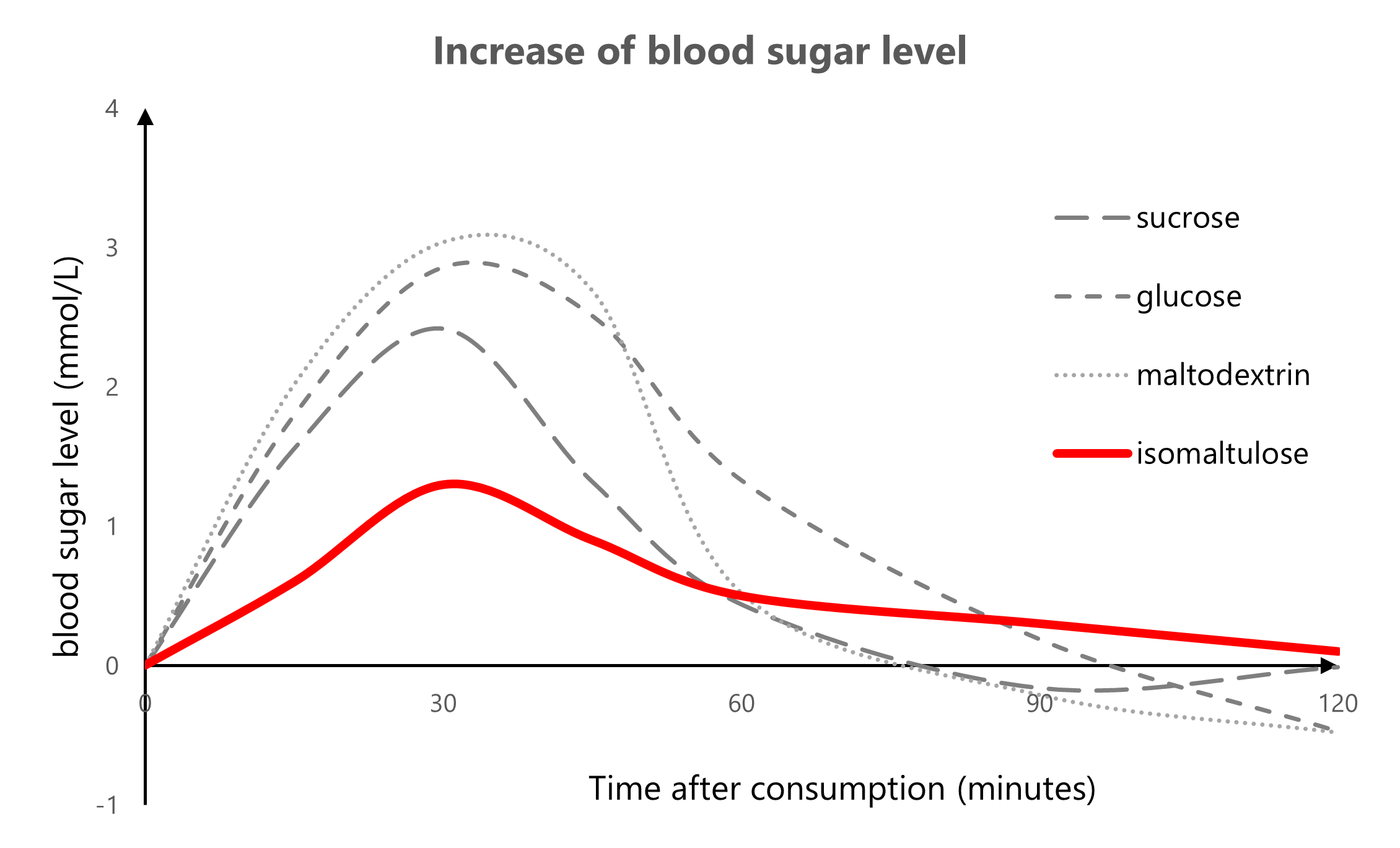
The secret of isomaltulose
How a sugar turns out to be healthy
Isomaltulose is a low glycemic toothfriendly sugar that keeps your energy levels up throughout the day and provides an optimal energy boost during exercise. The secret ... this sugar ensures a more balanced blood sugar level. Too good to be true? Not at all!
A little bit of biochemistry
Isomaltulose, like beet and cane sugar (sucrose, sucrose), is a disaccharide consisting of glucose and fructose. Due to a more rigid bond, namely an α-1,6 bond compared to an α-1,2 bond, isomaltulose is broken down much more slowly in our body by our digestive enzymes into glucose and fructose. After all, it is only the simple sugars such as glucose and fructose that are absorbed into our body through the wall of our small intestine.
This slower digestion and absorption of isomaltulose compared to other carbohydrates such as fructose, glucose, sucrose and maltodextrin has some unique effects on our body. Among other things, it results in a lower glycemic response (slower and lower rise in blood sugar) and a more controlled release of glucose, and thus energy, to the body. An additional important consequence is the increased share of fat burning in the energy supply of our body.
Glycemic response - a comparison between sugars
The glycemic response represents a change in blood sugar level after ingestion of a carbohydrate-rich drink, snack or meal. A rise in blood sugar will also cause an increase in insulin levels, a hormone that promotes the absorption and burning of glucose in our muscles, but also slowing down fat burning. With an excess of glucose, fat storage will be promoted.
However, the glycemic response can vary greatly depending on the type of carbohydrate. Here you have the schematic representation of the glycemic response of sucrose, glucose, maltodextrin and isomaltulose with equal intake.

The sharp rise in blood sugar levels when glucose (also known as dextrose) and maltodextrin, closely followed by sucrose, is evident. With isomaltulose, the increase remains limited, which also relates to a lower insulin response.
The curves of glucose, sucrose and maltodextrin also fall below the baseline, i.e. a decrease in the blood sugar level versus the initial level. Also known as a hypoglycemic fall or energy dip, which is accompanied by physical fatigue, loss of concentration and hunger attacks. With isomaltulose, however, it remains positive and is significantly higher, which translates into the presence of more energy to feed the muscles (and brain).
And the winner is …
All these effects give isomaltulose some important advantages over quickly digestible, high glycemic sugars.
The slower and lower rise in blood sugar, combined with the absence of a hypoglycemic fall, provides a more controlled supply of glucose, and thus energy, to the muscles (and the brain). On top, the insulin response will also be lower, so that fat burning is less inhibited. A higher proportion of fat burning in the energy supply ensures that, for example, you can use the same amount of carbohydrates for longer compared to athletes who burn less fat. A double win!
The lower glycemic response and especially the absence of a hypo can also provide a solution for diabetics for better blood sugar control.
And toothfriendliness is always a bonus.








